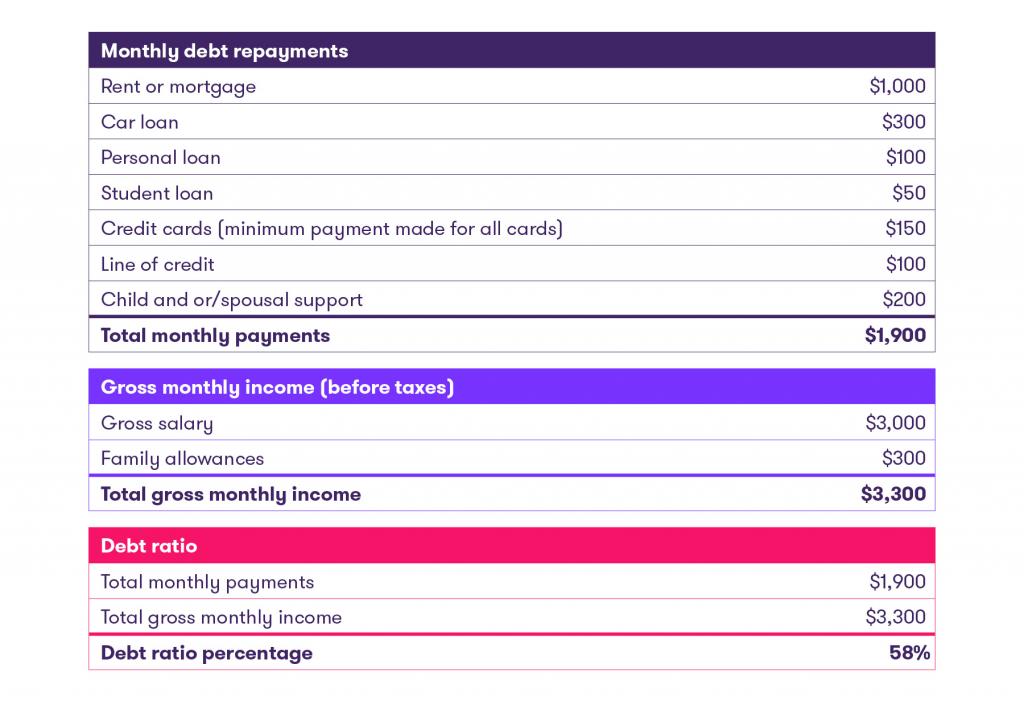
What is the debt ratio?
Summary
- Whether it be “good” or “bad,” a debt is problematic when you are no longer able to pay it back on time.
- By calculating the ratio between your income and your debts, you get your “debt ratio.” This is something the banks are very interested in.
- A debt ratio below 30% is excellent. Above 40% is critical. Lenders could deny you a loan.
To avoid ending up in “overleveraged” situation, it’s important that you know and understand your debt ratio. We’ll explain what it is.
The debt ratio explained
The debt ratio is a measure that indicates the ratio of your income to your debts. Some also call it the “indebtedness ratio” or “debt load.”
The debt ratio measures the gross annual income required for monthly payments on all debts.
Every time you want to borrow from your bank, your debt ratio is calculated. The result is a picture of your finances. Specifically, it tells the bank whether you will theoretically be able to repay the loan you are applying for.
How do I calculate my debt ratio?
Calculating your debt ratio is simple: divide your total gross monthly debt payments by your gross monthly income. Which debts? Debts include what people call “good” debt—like your mortgage—and what is considered “bad” debt—like the balance on a credit card you used for a trip. Your total debts should include your car loan payment, your 36-month fridge loan payment, etc.
Here’s an easy-to-use tool to help you calculate your debt ratio.

Do I need to worry about my debt ratio?
If your debt ratio does not exceed 30%, the banks will find it excellent. Your ratio shows that if you manage your daily expenses well, you should be able to pay off your debts without worry or penalty.
A debt ratio between 30% and 36% is also considered good.
It’s when you’re approaching 40% that you have to be very, very vigilant. With a threshold like that, you’re a greater risk to lenders. You may already be having trouble making your payments each month. As a result, lenders may deny you a car loan, a student loan or a mortgage, for fear that you won’t be able to pay them back.
What do I do if my debt ratio is over 40%?
You should see this as a wake-up call. This is probably a sign that your debts are taking up too much room in your finances. And, contrary to what many people believe, over-indebtedness is not just a “bad patch.” It’s a situation that can quickly become a spiral.
Fortunately, there are ways out of this. The important thing is to act quickly. Why not now?
Debt ratio
Meet with one of our counsellors for free
Don’t ignore a debt problem that’s ruining your life. Let’s work together to help you regain control of your finances.


